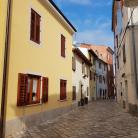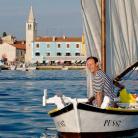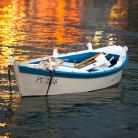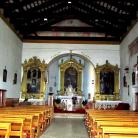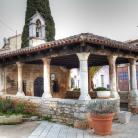Five gem of the old town core
When in Fažana, you should pursue the maze of small town squares and streets, listen to the heartbeats of everyday life, intake the aromas of cuisine. The nest of stone set on a shore, Fažana, tells a story of heritage with each step you take.
Historic core of Fažana
Historic core of Fažana, with its simple contours and closeness of two-storey houses displays an integrated unity, where each structure has its own architecture: door facing the sea, door facing the neighbor’s house and back door...
In normal conditions, such a composition of houses enabled a proper family life, but in times of peril and enemy attacks, such structures were transformed into a fortification. By opening side doors, which enabled internal communication, defenders in the houses had a better chance of defending. The inhabitants of Fažana used such possibilities of multi-purpose organization and protection during Uskok and pirate attacks.
La rondinella
La rondinella was the shortest and narrowest street in Fažana named after the swallow (italian: la rondinella), because according to the stories of old townspeople it was so narrow that only swallows could fly through it.
The parish church of SS Cosmas and Damian stands in the square, close to the seaside.
An aisleless Gothic edifice that later gained elements of the Baroque style was built in the late of the 15th century. The interior of the church is furnished with five marble altars with wooden retables. The northern church wall holds a painting representing The Last Supper made in 1598 by the well-known painter from Zadar, Zorzi Ventura. The main altar too, holds a fine painting depicting Resurrected Christ with Saints, oil on canvas bearing all the features of the Venetian painter Leonardo Corone, painted around 1590. The walls of the vestry still bear traces of frescoes probably made by masters from Friuli in the 16th century.
Church of our Lady of Mount Carmel stands in the perimeter part of the historic core.
The aisleless small church was built in the 14th century. The subsequently added portico (“lopica”) is from the 17th century. The interior has a ribbed vaulting, walls still bear traces of frescoes from the 15th century, while the altar holds a wooden polychrome sculpture of the Virgin with Child, also from the 15th century.
“Batana” is a small boat with distinctive features, one of the symbols of Istrian and Dalmatian fishing. “Batana” is an old traditional boat, usually 4 - 5.5 meters long. It once had a triangular sail and the mast passed through the thwart. The sails were characteristically painted and each family had its own symbol at the top of the sail so people on the coast could see whose “batana” was returning from sea. Today, many fishermen still have a “batana” and in summer organize contests to test their rowing skills.













